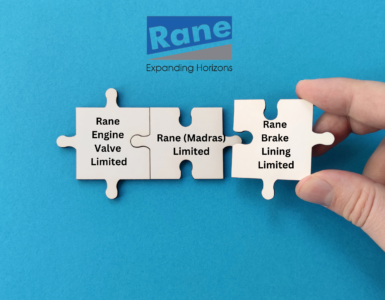A panel of Ministers called the EGoM (Empowered Group of Ministers) approved the final draft of the much-awaited merger & acquisition (M&A) guidelines for the Telecom sector which are likely to support the consolidation of the Telecom companies. The M&A guidelines will now be sent to the Union Cabinet for its approval. Before looking at the major highlights of the new guidelines let us first get acquainted with the Telecom Industry and its important terms.
India’s telecom sector has at least eight telcos in each major circle or operating area. India is the world’s second-largest telecommunications market, with 898 million subscribers as on March 2013. The Indian mobile phone market is highly competitive with more than 150 device manufacturers trying to attract the consumers with their schemes and offers. India added 1.49 million GSM subscribers in July 2013, taking the total GSM user base in India to 672.63 million. Moreover, in June 2013 the GSM telecom operators added 2.33 million new subscribers, to take the user base to 271.6 million at the end of the month, according to the data released by Cellular Operators Association of India (COAI). India has immense opportunities for telecom operators and is one of the best markets for telecom business.
India’s fast-growing telecom market suffers from a general scarcity of spectrum, giving operators a strong incentive to acquire more by means of mergers.
India’s telecom liberalization was noticed by Global investors in 1995 when the Government permitted entry of foreign telecom operators through Joint venture route. Some of these global giants included Vodafone, AT&T, Hutchison Whampoa etc. The predominant objectives of any takeover in telecom sector are:
- Acquisition of licences or geographical territory;
- Acquisition of spectrum;
- Acquisition of telecom infrastructure and network;
- Acquisition of customer base to achieve an economic base;
- Acquisition of brand value;
- Higher operating profit (EBITDA) margin
Telecom Industry offers many opportunities for mergers and acquisitions. Foreign Investors look at India as the fastest grown telecom market in the world after China. Mergers & Acquisitions in the Telecom Sector is supervised by the regulatory authority of the telecommunication industry, which is India’s case is the “Telecom Regulatory Authority of India” – TRAI.
Other Regulatory Bodies in India
Important Terms:
TRAI – Telecom Regulatory Authority of India
DoT – Department of Telecommunications
Spectrum – Collection of various types of electromagnetic radiations of different wavelengths. Spectrum or airwaves are the radio frequencies on which all communication signals travel.
Telecom Circle – A cellular mobile service area classified by subscriber base and revenue potential. The four types of telecom circles in India are Metro, A, B, and C.
THE NEW M&A GUIDELINES:
Increased Spectrum:
A total of 403 megahertz (Mhz) of additional spectrum(2G ie Second Generation) will be auctioned in the 1800 Mhz band in the auctions scheduled for January, an addition of 118 MHz, or 41.4 percent, to what the EGoM had proposed earlier. The addition also means that an average 18 MHz of the spectrum will be up for sale in each circle – enough for three to four operators.
The auction which is most likely to take place in January is expected to raise a minimum of Rs.36,385 crore for the government in the 1800Mhz band alone, if it is all sold at the approved reserve price—welcome funds for a struggling government.
Market Share:
Earlier, TRAI had recommended that mobile phone companies could merge their operations if the combined market share of the new entity is less than 60% which then was 40%. The DoT Panel after examining TRAI’s recommendation was of the view that the combined market share of 60% would lead to a “monopoly market situation” and further suggested that the market share ceiling is reduced to 35%.
The EGoM in their meeting held on December 3, 2013, have agreed to increase the earlier-proposed 35 percent cap on market share (in revenue, as well as user base) for merged entities in a circle to 50 percent. However, if a merged entity breaches this 50 percent ceiling in any circle, the companies will get a year to lower the share to below 50 percent.
Lock-In Period:
The three-year lock-in period during which companies are not allowed to transfer equities will continue for now. The EGoM is of the opinion that this issue needs legal consultation hence the matter is likely to be sent to the Attorney General of India for legal consultation.
Price for the Spectrum:
An acquirer will have to pay the difference between the auction-determined market price and the administrative price for anything beyond 4.4 MHz in the GSM band and 2.5 MHz in CDMA if an acquired company has got spectrum after paying the administrative price.
If an incumbent telco acquires another incumbent operator, it will not have to pay for the 4.4 MHz GSM spectrum or 2.5 MHz CDMA spectrum, the acquirer had got as part of its licence agreement. It will only have to pay market price for the spectrum being acquired. But, if a new operator – for eg Teleport, which has already bought spectrum through auctions – decides to acquire an incumbent telco, it will have to pay the market-determined price for the spectrum held by the company it is acquiring. On the other hand, if an incumbent operator buys a new operator, it will not have to pay anything for the spectrum it gets after the acquisition.
Conclusion:
India’s fast-growing telecom market, the world’s second-largest by subscribers, suffers from a general scarcity of spectrum, giving operators a strong incentive to acquire more by means of mergers.
Looking at the price to be paid for acquiring the spectrum, M&A activities are most likely to take place in situations where the acquirer would not have to pay for spectrum. The new guidelines will benefit the incumbent operators like Vodafone and Airtel largely. The 50 percent market share ceiling also gives the current operators more freedom to acquire other telcos which would not have been difficult under the 35 % rule. If the government had maintained the market share ceiling at 35 percent of revenue and user base, the possible merged entities would have exceeded the ceiling in most of these cases.
“The quantum of spectrum in auction plays a very important role in determining the fair price for the spectrum, the capacity of the operators to pay for the quantum of the spectrum they acquire, quality of service etc,” says Hemant Joshi, a partner at Deloitte Haskins and Sells.
“EGoM’s decision to increase the quantum of spectrum in the next auction would be very positive for the industry as lower spectrum available in an auction might result in aggressive bids by the operators, who end up paying very high price for the spectrum,” said Joshi.
Highlights of EGoM decisions
- M&A policy for telecom cleared
- If an acquired firm has got spectrum at an administrative price, its acquirer will pay for its spectrum. Price to be the gap between market and administrative prices
- The 3-yr period for which transfer of equity is barred will continue; the issue needs legal opinion
- Market share of a merged entity should not exceed 50% in each circle. If it does, firms will have to bring it down below 50% in a year
- Government to auction 403 MHz of spectrum in 1,800-MHz band




